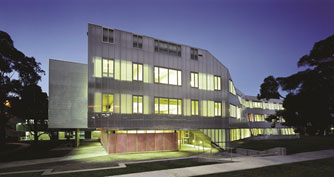 Applied research is gathering momentum in the TAFE sector. An earlier newsletter article (RedSpace: thinking) looked at Red:Space, TAFE Queensland’s Centre for Applied Research and Innovation, and reported on a recent Innovation and Applied Research Roundtable held at Canberra Institute of Technology and hosted by TAFE Directors Australia and the LH Martin Institute.
Applied research is gathering momentum in the TAFE sector. An earlier newsletter article (RedSpace: thinking) looked at Red:Space, TAFE Queensland’s Centre for Applied Research and Innovation, and reported on a recent Innovation and Applied Research Roundtable held at Canberra Institute of Technology and hosted by TAFE Directors Australia and the LH Martin Institute.
Applied research through TAFE is enlarging innovation capacity in Victoria, bringing benefits to business, hospitals and community service providers. Students benefit too.
As part of VDC funded research in 2015, Applied research in Victorian TAFEs – Case studies (24 pages) by the Victorian TAFE Association (VTA) shines a light on a capability that is little recognised. With a growing policy focus on innovation, both nationally and at state and territory levels, this is the right time to get the message out. The introduction to the case studies describes the field of endeavour for applied research:
Applied research concentrates on technical challenges, business process bottlenecks and service delivery inefficiencies. It may also be concerned with designing high quality training programs that overcome such problems, including examining what constitutes best practice in teaching and learning. But it’s the challenge, the bottleneck, the inefficiency, the idea in a business setting that is the flywheel of applied research.
TAFE’s applied research strengths
The VTA sets also out the advantages that TAFE brings to the conduct of applied research. TAFE Institutes have a repository of knowledge about the needs and operating contexts of businesses and service providers of all sizes and in all industry sectors. TAFE providers also have a ready skillset that can be applied to dissolving sticking points and capitalising on opportunities. As the introduction to the case studies notes, applied research also brings direct benefits to students:
Applied research harnesses the skills and knowledge of TAFE teachers to devise solutions in collaboration with an industry client. The benefit for TAFE students is becoming active participants in resolving a live problem in their industry of study. This scenario means they can apply what they already know and can do, develop new skills, make a difference. It’s a scenario that fosters engagement, boosts learning outcomes and lifts career opportunities.
The case studies
The VTA has collected six case studies for this volume which cover a marvellous diversity of applied research activity: winemaking at Melbourne Polytechnic, boatbuilding at GOTAFE,
The Gordon TAFE’s strategic incorporation of blended learning into training delivery, the growth of applied research capability at Holmesglen Institute, Kangan Institute’s Textile and Fashion Hub, and the thoughtful design of training delivery at Chisholm Institute’s Berwick Technical Education Centre.
What is apparent from the case studies is that TAFE Institutes have conducted applied research for a very long time and long been very adept at it.
The general tendency is to think of innovation as something that is new to the world. But very often, innovation is something that is new to a particular business. GOTAFE has introduced closed moulding of composites to not one, but many, small and medium sized enterprises in a niche industry sector. The case study puts closed moulding into a commercial context:
Closed moulding of composites is now in commonplace use by international competitors. It consists of a range of processes and materials that reduce time, waste and environmental emissions.
Closed moulding is a sound investment in commercial viability. At the heart of its diffusion within Victoria’s boatbuilding industry is a wised up trainer, Phil Bovis, who has introduced closed moulding and other innovations through his training of boatbuilding apprentices.
TAFE also has the expertise and industry contacts to establish innovation hubs. Kangan Institute’s Textile and Fashion Hub houses the latest technology which is available to microbusiness owners and SMEs. With the assistance of skilled Kangan staff practitioners in the field can undertake applied research on their own designs and products.
Training expertise is of course at the heart of VET. Innovation in training design, delivery and assessment has followed an increasing trajectory over the past decade. The potential of elearning has been grasped and folded into the training business. What sometimes goes unnoticed is the potential of online and blended learning to support industry innovation. The Gordon case study describes its three year BlendED strategy which is ensuring that teachers across The Gordon make the most of elearning’s potential and flexibility. It also shows just how powerful innovation in teaching and learning can be for industry:
Geelong is home to Deakin University’s Carbon Nexus Carbon Fibre pilot plant and international research and innovation hub. With the support of BlendED, the training program for production workers incorporates targeted use of e-learning in delivery and assessment.

